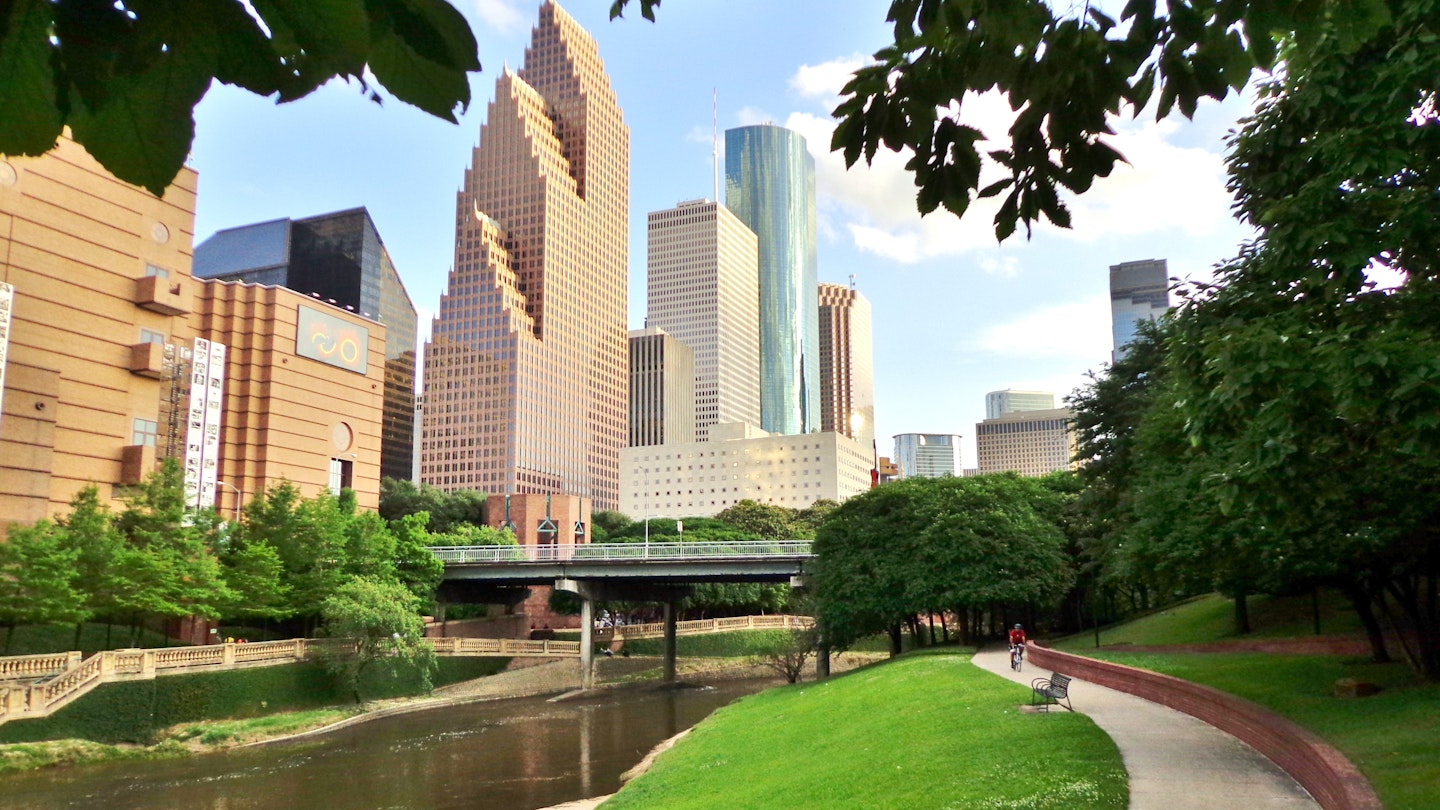Exploring Houston’s Architectural Wonders
While exploring Houston, visitors may find that the city’s architectural identity is incredibly diverse. As the third-largest skyline in the USA, Houston is a vibrant mixture of varied and innovative designs. The architecture here inspires innovation, featuring massive skyscrapers created by renowned architects alongside historic buildings and a few quirky gems.

Texas’s Tallest Skyscraper
I.M. Pei, renowned for designing the Louvre in Paris, is also the architect behind the JPMorgan Chase Tower in downtown Houston, the tallest building in Texas. This impressive skyscraper stands 75 stories tall and is notable for being the tallest five-sided building globally. Additionally, a modern art sculpture outside the building, also attributed to I.M. Pei, adds to its cultural significance.
Houston’s Theater District
The Theater District in Houston occupies 17 blocks in the heart of downtown, providing an entertainment venue for various artistic performances. For example, check out Jones Hall for the Performing Arts, which houses the prestigious Houston Symphony Orchestra. This symphony hall spans an entire city block and features an elegant exterior crafted from white Italian marble.

Nearby, the Alley Theatre, designed in a unique brutalist style without any right angles, was created by architect Ulrich Franzen to “sing from any viewpoint.” This design provides an acoustic experience tailored for live performances, making it one of the top venues to enjoy a show in the United States.
Houston’s Historic Buildings
Founded in 1890, Houston Heights remains one of Texas’s earliest planned communities, boasting eclectic shops along 19th Street that enhance the shopping experience. Visitors can leisurely stroll around the residential areas to admire the charming cottages and bungalows that emerged during the late 19th century.

In Sam Houston Park, architecture enthusiasts can witness some of the oldest residential homes in Houston. Here, visitors can explore a log cabin dating back to 1823, which is the city’s oldest building, alongside other preserved structures from the 19th century. The Heritage Society at Sam Houston Park provides insightful walking tours that allow guests to delve into the history of these remarkable buildings.
Houston’s Offbeat Architecture
Head to 222 Malone Street in Rice Military to witness the intriguing Beer Can House, a late 1960s home adorned with flattened beer cans and bottle caps. Created by John Milkovisch, this unique residence began as a lawn cover and transformed into a celebrated piece of folk art in Houston. The Orange Show Center for Visionary Art, which promotes artistic expression in the local community, now oversees the Beer Can House, which is available for tours on weekends with prior arrangements.

Located on the campus of the University of St. Thomas is the Chapel of St. Basil, a modern architectural marvel that showcases three basic geometric shapes: a cube, a sphere, and a plane. Completed in 1997, the chapel is distinguished by its abundant natural light, facilitated by reflective surfaces that maximize sunlight exposure. Additionally, the campus features a serene labyrinth prayer garden, enhancing the spiritual atmosphere of the location.
Lastly, on the west side of Houston lies the Chong Hua Sheng Mu Holy Palace, an abandoned structure capped with a 40-foot golden orb. Originally constructed in the late 1990s to serve as a Taoist compound, its development halted after the passing of the movement leader. Consequently, the unfinished palace has become a popular architectural oddity cherished by locals, despite the inability to tour its interior.





